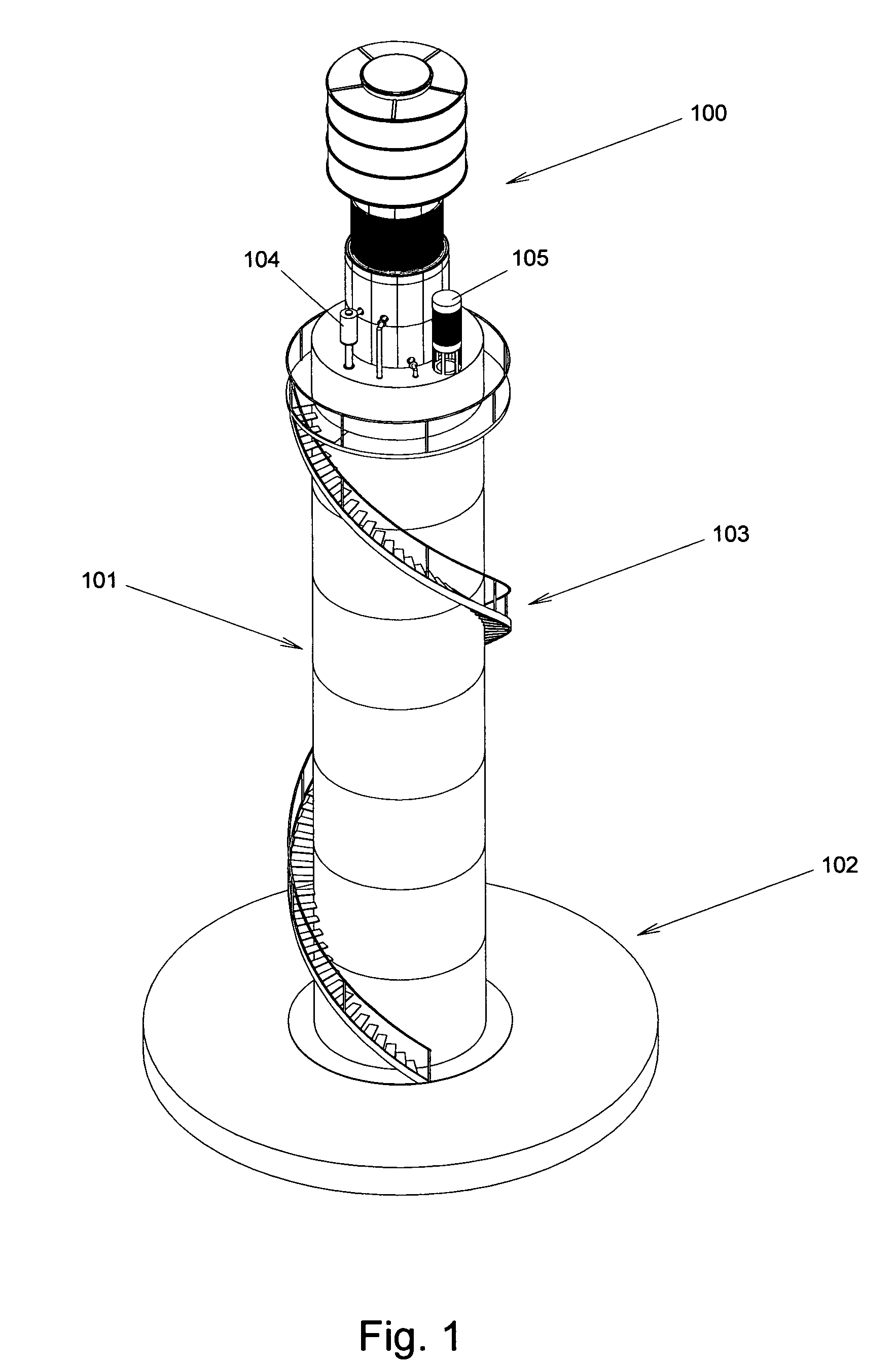Solar-powered, liquid-hydrocarbon-fuel synthesizer
a liquid hydrocarbon fuel and solar energy technology, applied in the field of reaction cells, can solve the problems of reduced pollution-per-transportation-mile, unnecessary addition of oil refinery capacity, etc., and achieve the effect of high utility of liquid hydrocarbon fuel, easy containment and transportation
- Summary
- Abstract
- Description
- Claims
- Application Information
AI Technical Summary
Benefits of technology
Problems solved by technology
Method used
Image
Examples
Embodiment Construction
[0076]FIG. 1 is an idealized representation of the liquid-hydrocarbon-fuel synthesizer, 100, sitting atop a tower, 101. The tower height depends upon the production rate of the synthesizer. A smaller output will require a smaller heliostat array, and a shorter tower. FIG. 1 illustrates how a tower might look if built upon a foundation, 102, that doubles as a carbon holding pit. A transfer case, 104, changes the direction of carbon, lifted from the holding pit, from vertical to horizontal. Water might be stored in a tank disposed within the base of said tower. Pump, 105, condenses coolant that lowers the turbine outlet temperature and pressure. Maintenance access to said synthesizer is by stairs, 103. Said tower might include a retractable maintenance crane, not drawn, disposed near the top said tower. The crane lifts the rotating assembly for maintenance. Materials and supplies too heavy to transport by stair could be raised from ground level by such a crane. During operation of sai...
PUM
| Property | Measurement | Unit |
|---|---|---|
| pressure | aaaaa | aaaaa |
| pressure | aaaaa | aaaaa |
| operating radius | aaaaa | aaaaa |
Abstract
Description
Claims
Application Information
 Login to View More
Login to View More - R&D
- Intellectual Property
- Life Sciences
- Materials
- Tech Scout
- Unparalleled Data Quality
- Higher Quality Content
- 60% Fewer Hallucinations
Browse by: Latest US Patents, China's latest patents, Technical Efficacy Thesaurus, Application Domain, Technology Topic, Popular Technical Reports.
© 2025 PatSnap. All rights reserved.Legal|Privacy policy|Modern Slavery Act Transparency Statement|Sitemap|About US| Contact US: help@patsnap.com



